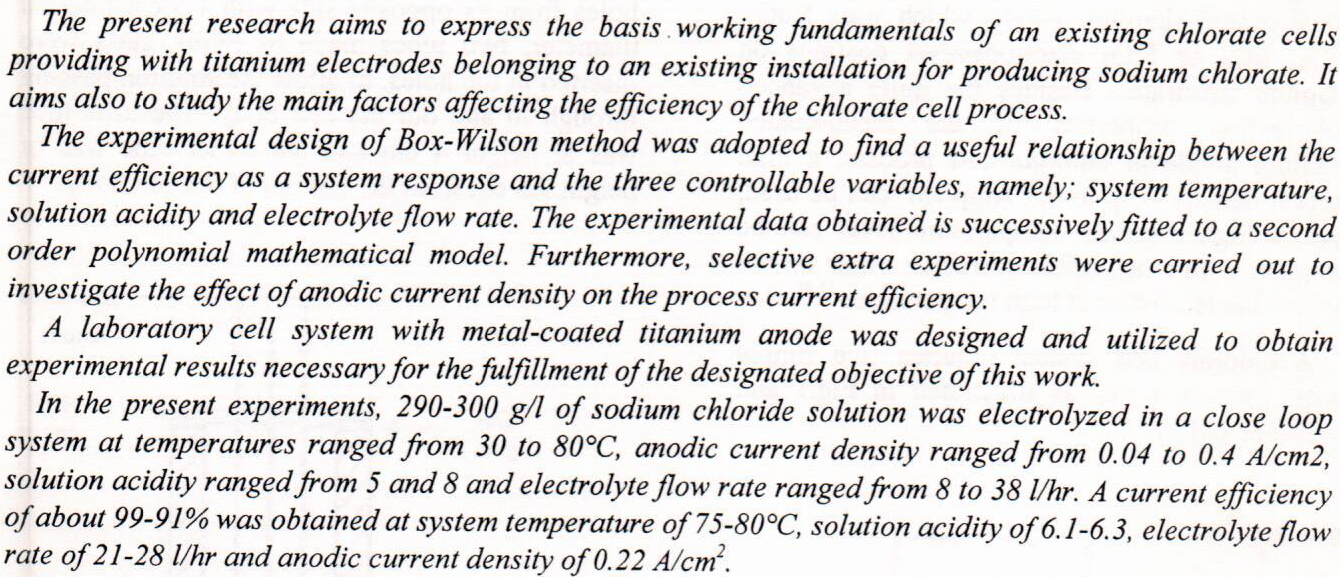
 (1)
(1)
Consequence of thermal and concentration convection on peristaltic pumping of hyperbolic tangent nanofluid in a non‐uniform channel and induced magnetic field is discussed in this article. The brief mathematical modeling, along with induced magnetic field, of hyperbolic tangent nanofluid is given. The governing equations are reduced to dimensionless form by using appropriate transformations. Exact solutions are calculated for temperature, nanoparticle volume fraction, and concentration. Numerical technique is manipulated to solve the highly non‐linear differential equations. The roll of different variables is graphically analyzed in terms of concentration, temperature, volume fraction of nanoparticles, axial induced magnetic fie
... Show More (20)
(20)
 (18)
(18)
Background: A great dental and biomedical interest had been paid to silver nanoparticles because of their antimicrobial activity. Objective: To evaluate the antimicrobial and cytotoxic activity of a newly developed Nano-silver fluoride that was synthesized from moringa oleifera leaf extract against S. mutants. Material and method: The green synthesis method was used to prepare Nano-silver fluoride from moringa oleifera leaf extract. The minimum inhibitory concentration and the minimum bactericidal concentration were evaluated using brain heart infusion plates, while the cytotoxicity was evaluated by the hemolytic activity. Results: Nano-silver fluoride had a bactericidal and bacteriostatic effect (MIC was 60 ppm a
... Show More (10)
(10)
 (5)
(5)
 (3)
(3)
 (3)
(3)
 (14)
(14)
 (11)
(11)
Background Numerous studies indicated that workers in the health sector suffer from work stress, hassles, and mental health problems associated with COVID-19, which negatively affect the completion of their job tasks. These studies pointed out the need to search for mechanisms that enable workers to cope with job stress effectively. Objectives This study investigated psychological flow, mental immunity, and job performance levels among the mental health workforce in Saudi Arabia. It also tried to reveal the psychological flow (PF) and mental immunity (MI) predictability of job performance (JP). Method A correlational survey design was employed. The study sample consisted of 120 mental health care practitioners (therapists, psychologists, co
... Show More (1)
(1)
 (8)
(8)
 (8)
(8)
As material flow cost accounting technology focuses on the most efficient use of resources like energy and materials while minimizing negative environmental effects, the research aims to show how this technology can be applied to promote green productivity and its reflection in attaining sustainable development. In addition to studying sustainability, which helps to reduce environmental impacts and increase green productivity, the research aims to demonstrate the knowledge bases for accounting for the costs of material flow and green productivity. It also studies the technology of accounting for the costs of material flow in achieving sustainable development and the role of green productivity in achieving sustainable development. According
... Show More (3)
(3)
 (1)
(1)
It is important to note that Posaconazole (POCZ) is a newly developed extended-spectrum triazole that belongs to BCS class II and has a solubility of less than 1µg/ml. In patients with a weakened immune system, POCZ has been shown to be effective as an antifungal treatment for invasive infections caused by candida and aspergillus species. The nano-micelles technique can be used to increase POCZ solubility. In order to increase their apparent solubility in water, nano-micelles are made by combining macromolecules that self-assemble into ordered structures capable of entrapping hydrophobic drug molecules in the interior domain. Dispersed colloidal systems, of which nano-micelles are a subset, are a large and diverse group. Composed of a p
... Show More (8)
(8)
 (4)
(4)
